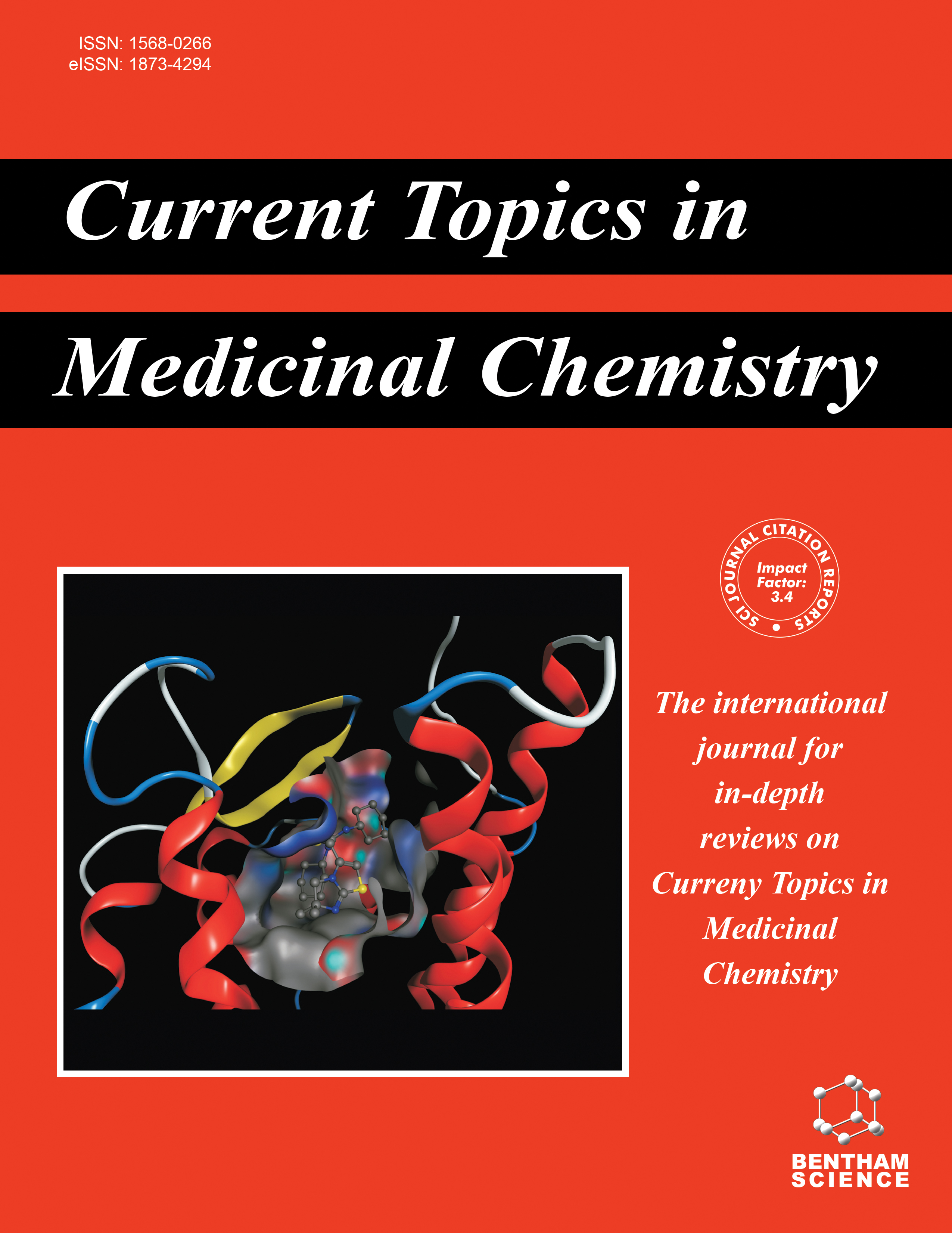- Home
- A-Z Publications
- Current Topics in Medicinal Chemistry
- Previous Issues
- Volume 3, Issue 9, 2003
Current Topics in Medicinal Chemistry - Volume 3, Issue 9, 2003
Volume 3, Issue 9, 2003
-
-
Bacterial Ribosomal Subunit Assembly is an Antibiotic Target
More LessBy W. ChampneyA substantial number of antimicrobial agents target some activity of the bacterial ribosome for inhibition. Mechanistic studies and recent structural investigations of the ribosome have identified the binding sites and presumed mechanism of inhibitory activity for some compounds. A second target for many of these antibiotics has recently been examined. Formation of both 30S and 50S ribosomal subunits in bacterial cells is i Read More
-
-
-
Macrolide Antibiotics: Binding Site, Mechanism of Action, Resistance
More LessAuthors: M. Gaynor and A.S. MankinMacrolides are among the most clinically important antibiotics. However, many aspects of macrolide action and resistance remain obscure. In this review we summarize the current knowledge, as well as unsolved questions, regarding the principles of macrolide binding to the large ribosomal subunit and the mechanism of drug action. Two mechanisms of macrolide resistance, inducible expression of Erm methyltransferase an Read More
-
-
-
Recent Developments in Macrolide Antimicrobial Research
More LessAuthors: T. Asaka, A. Manaka and H. SugiyamaClarithromycin and azithromycin, which are more acid-stable than erythromycin A (EM), have been widely prescribed for the treatment of respiratory tract infections because of their high efficacy and safety. However, these macrolide antibiotics are only weakly active against pathogens with an efflux gene (mef) and are inactive against pathogens with a methyltransferase-inducible gene (erm) and constitutively resistant Read More
-
-
-
Structural Consideration of Macrolide Antibiotics in Relation to the Ribosomal Interaction and Drug Design
More LessBy H. TakashimaMacrolide antibiotics exert antimicrobial effects by binding to the peptidyl transferase center of the 50S subunit of bacterial ribosomes and inhibiting protein synthesis. Hence, the structure of macrolides and their interaction with bacterial ribosomes have been investigated in order to understand the structural mechanisms of macrolide-ribosome interaction. Most macrolides have been found tom adopt a common conf Read More
-
-
-
Aminoglycoside and its Derivatives as Ligands to Target the Ribosome
More LessProtein synthesis is a central function in cellular physiology, and this important process is the target of many naturally occurring antibiotics and toxins. One such antibiotic is the aminoglycoside, which has been widely utilized in the clinical in the last fifty years due to their low cost and reliable activities. However the usage and applications of aminoglycosides have been severely limited due to their numerous side effects and res Read More
-
-
-
Oxazolidinone Antibacterial Agents: A Critical Review
More LessThis review covers recent developments in several important aspects of research on oxazolidinone antibacterial agents. Structure-activity relationships are first discussed, emphasizing bioisosteric replacements for the both the oxazolidinone ring and the N-acetylaminomethyl group at C-5. The oxazolidinones have a mechanism of action that is distinct from other antibacterial agents, whereby protein synthesis is inhibite Read More
-
Volumes & issues
-
Volume 25 (2025)
-
Volume 24 (2024)
-
Volume 23 (2023)
-
Volume 22 (2022)
-
Volume 21 (2021)
-
Volume 20 (2020)
-
Volume 19 (2019)
-
Volume 18 (2018)
-
Volume 17 (2017)
-
Volume 16 (2016)
-
Volume 15 (2015)
-
Volume 14 (2014)
-
Volume 13 (2013)
-
Volume 12 (2012)
-
Volume 11 (2011)
-
Volume 10 (2010)
-
Volume 9 (2009)
-
Volume 8 (2008)
-
Volume 7 (2007)
-
Volume 6 (2006)
-
Volume 5 (2005)
-
Volume 4 (2004)
-
Volume 3 (2003)
-
Volume 2 (2002)
-
Volume 1 (2001)
Most Read This Month
Article
content/journals/ctmc
Journal
10
5
false
en


